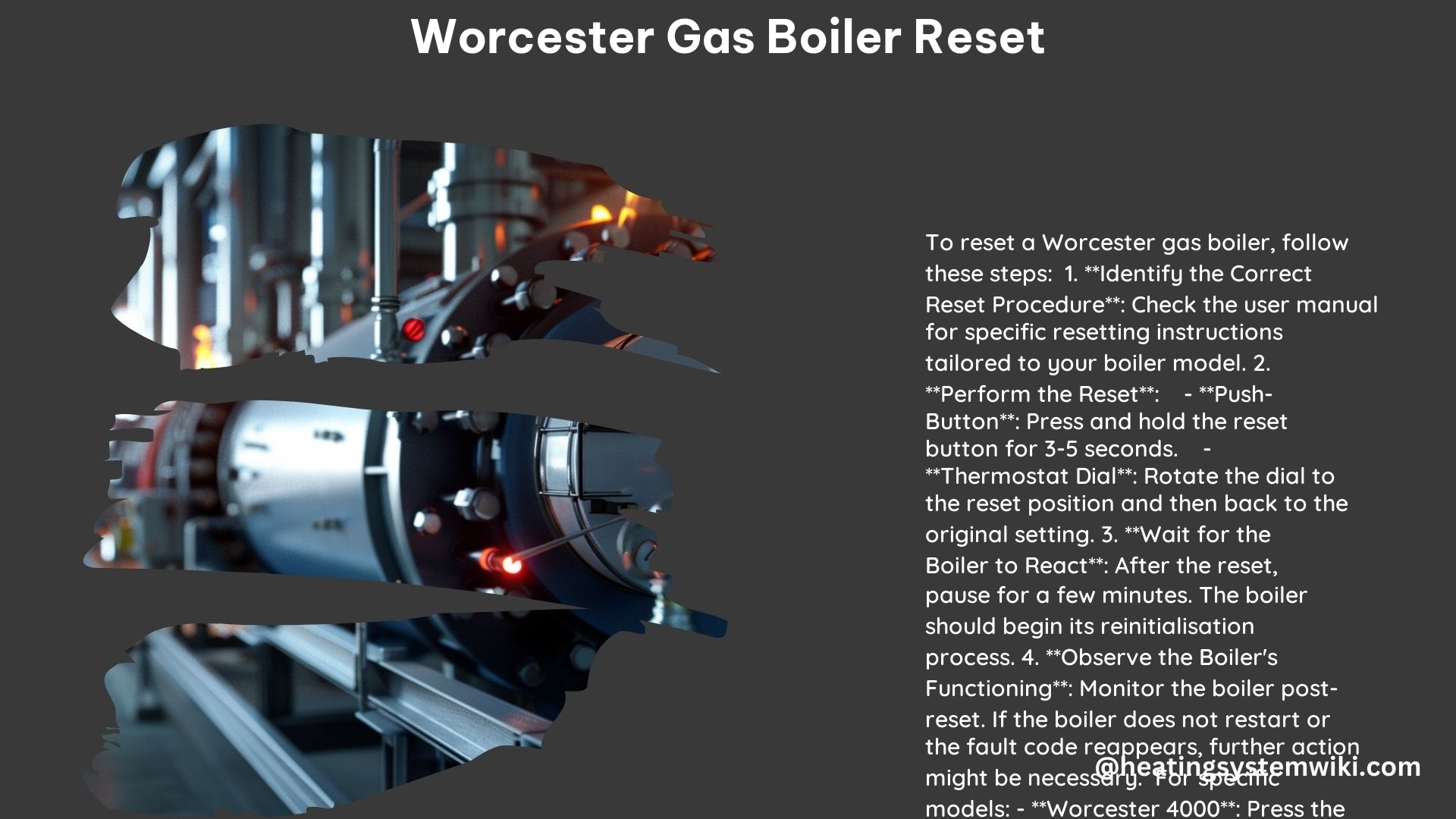Resetting a Worcester gas boiler can be a straightforward process, but it’s essential to understand the specific steps and safety precautions to ensure the proper functioning of your heating system. This comprehensive guide will walk you through the reset procedure, common error codes, and technical specifications to help you troubleshoot and maintain your Worcester gas boiler effectively.
Identifying the Correct Reset Procedure
Before attempting to reset your Worcester gas boiler, it’s crucial to consult the user manual for your specific boiler model. The location and appearance of the reset function can vary between different models, so following the manufacturer’s instructions is crucial to ensure a successful reset.
Performing the Reset

There are two common methods for resetting a Worcester gas boiler:
Push-Button Reset
- Locate the reset button on the control panel of your boiler. This button is often clearly labeled for easy identification.
- Press and hold the reset button for 3-5 seconds. Some models may have slightly different timing requirements, so it’s essential to adhere to the instructions provided in the user manual.
Thermostat Dial Reset
- Identify the thermostat dial on your boiler’s control panel.
- Rotate the dial to the reset position, which may be indicated by a specific marking or symbol.
- After a few seconds, rotate the dial back to the original setting to initiate the resetting process.
Waiting for the Boiler to React
After performing the reset, allow the boiler a few minutes to begin its reinitialisation process. During this time, the boiler should reignite the pilot light and resume normal operation.
Observing the Boiler’s Functioning
Monitor the boiler closely after the reset to ensure it is functioning correctly. If the boiler does not restart or the fault code reappears, further action may be necessary.
Common Error Codes for Worcester Gas Boilers
It’s essential to be familiar with the common error codes that may appear on your Worcester gas boiler’s display. Two common error codes are:
- EA 227 Error Code: This error code indicates a boiler lockout, meaning the boiler has tried firing up more than three times and has locked out to prevent damage.
- E9 Fault Code: The meaning of this error code can vary, so it’s crucial to consult your boiler’s user manual for specific guidance. Some E9 fault codes may require the expertise of a qualified heating engineer.
Full Reset on Worcester 4000 Boiler
The Worcester 4000 boiler has a slightly different reset procedure:
- Display Screen: The boiler will display a message with an icon in the right corner, indicating the severity of the fault.
- Fault Code: The display screen will show the fault code in text, such as “232.”
- Reset Procedure: Continue to press the up-and-down arrow keys until you see the “Reset” option. The boiler will then start again at the current temperature.
Technical Specifications
Reset Button
The reset button on a Worcester gas boiler is typically located on the control panel and is often clearly labeled for easy identification.
Reset Dial
Some Worcester gas boilers may have a reset dial instead of a button. This dial may be a prominently marked push-button or a recessed option that requires a pointed object to press.
Safety Precautions
Gas Smell or Safety Concerns
If you detect a gas smell or have any safety concerns related to your Worcester gas boiler, evacuate your property immediately and dial 0800 111 999 for emergency gas service.
Professional Assistance
If you are unsure about fixing the root cause of the issue or if it involves tasks beyond your capabilities, always call a qualified heating engineer to help.
Additional Tips
Annual Servicing
Regular servicing by a qualified heating engineer is necessary to keep your Worcester Bosch guarantee active and to ensure any issues are caught early before they become bigger, costlier problems later.
Boiler Maintenance
Frequent resets can indicate underlying issues, such as low water pressure, blocked pipes, or radiator airlocks. If the problem recurs, it’s best to consult a professional.
